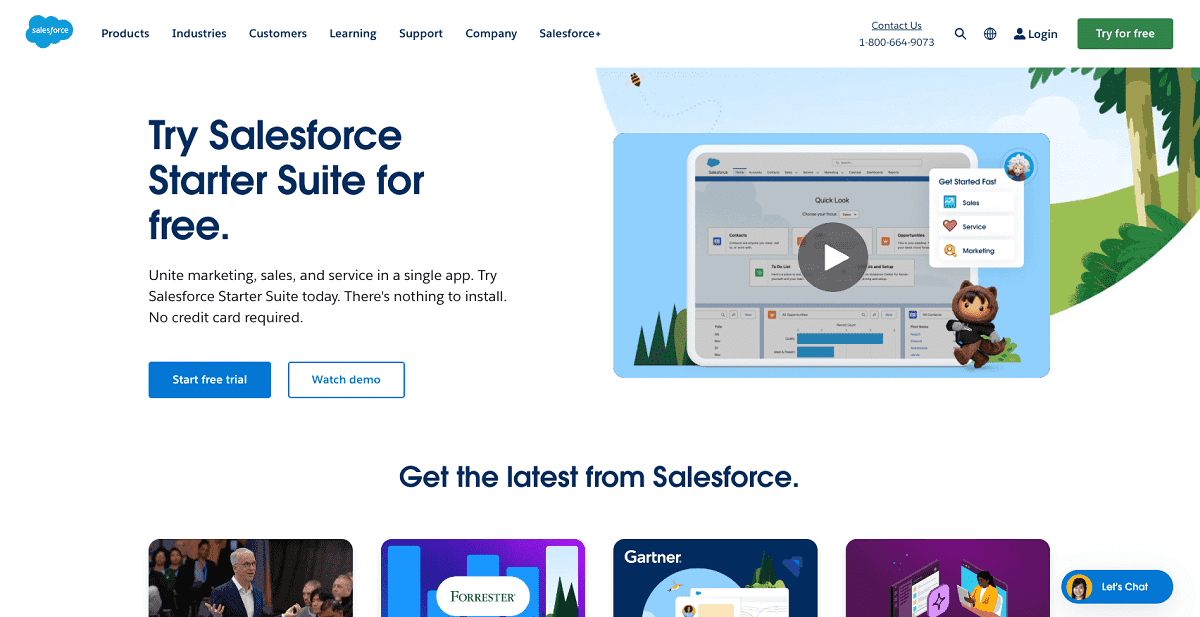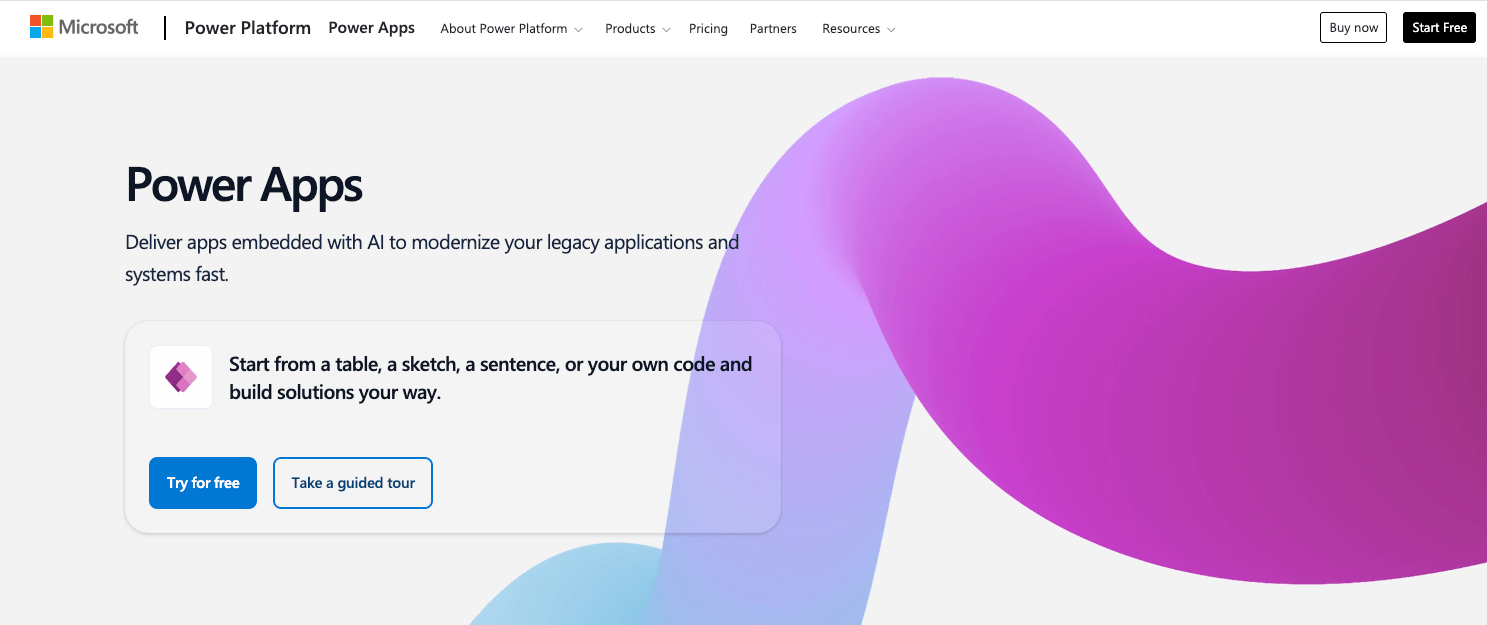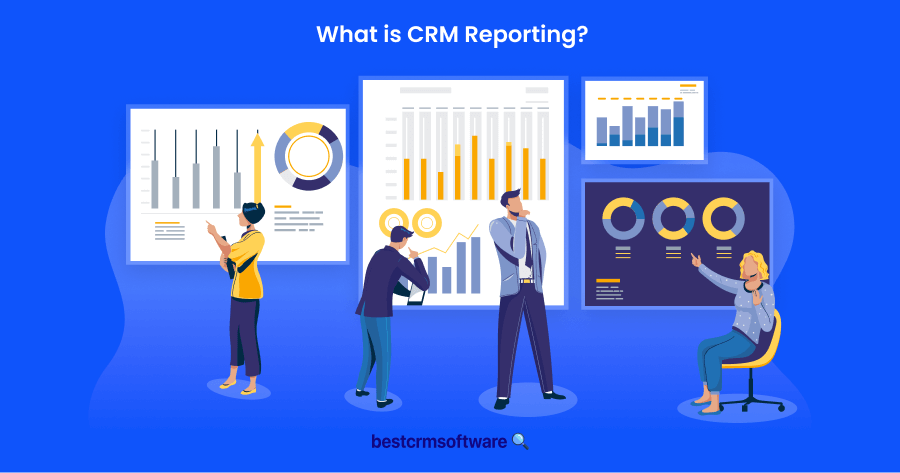
Enhance Business Growth Using These 5 Low Code CRM Solutions
In a Nutshell
As a business owner, I’ve spent a long time looking for the best low-code CRM platform for my applications. I want to provide my customers with the best service and experience without spending a lot of money on app development.
Throughout my research, I’ve tested and compared several low-code CRM-based solutions that can be helpful to me and my team. Of all the options, I found these platforms to be the best.
Top 5 Low Code CRM Software – Shortlist
1. SalesForce — Best for flexible customization
2. Hubspot — Best for non-technical beginners
3. Pipedrive — Best for small businesses
4. Zoho Creator — Best for bigger businesses looking for cost-efficiency
5. Microsoft Power Apps — Best for knowledgeable users
What is a Low-Code CRM?
A CRM (Customer Relationship Management) system helps businesses manage their customer data and interactions. By using a CRM system, companies can boost their sales, improve customer satisfaction, and reach business objectives.
Low-code CRM is a type of CRM system that can be built using low-code development platforms. These platforms are tools for software development, allowing users to create applications using pre-built modules, visual interfaces, and components.
Using a low-code CRM means users won’t have to write code from scratch. Low-code CRM modules and pre-built templates make it easy for anyone to build a business CRM system quickly.
Examples of Use Cases: Why Do You Need a Low-Code CRM?
Companies often need to do rapid application prototyping to test their ideas. Low-code CRM can be beneficial in materializing these ideas in a few days. It allows companies to obtain validation of concepts quickly.

Low-code CRM can also be the perfect solution if your organization still depends on an expensive, rigid legacy system. Low-code technology offers gradual modernization of these old systems, allowing businesses to build new modules and integrate their existing systems.
Low-code CRM-based solutions can be helpful in the long run, as businesses must regularly update their software needs. When it’s time for a business to scale up, such as adding new features, increasing the number of users, and expanding its markets, low-code platforms are the better solution.
Benefits
You may already have a clear idea of what a low-code CRM can do. If you’re unsure if it’s what you and your business need, here are some of the system’s benefits.

Increasing Productivity and Efficiency
Low-code CRM will enable users to build applications effectively regardless of their skill level. The platform uses drag-and-drop functionality, which requires only a slight learning curve. It’s simple to do and reduces the chance of errors, which you’ll get at least once through traditional coding.
Lower Development Cost
Compared to traditional development software, low-code platforms offer a higher ROI (return on investment). They can save production costs because they take a shorter time to produce the result.
Expandability and Flexibility
Business demands require you to keep on making changes. Low-code platforms provide an expansive room for customization. The customizable aspect of low-code systems allows business owners to update their applications to meet the ever-changing markets.
Enhance Communication Flow
Low code allows non-technical teams to understand what the developer wants to deliver quickly. Developers can explain things when a non-technical team or stakeholders must be included.
Improving User Experience
Low-code CRMs prioritize user-friendly interfaces. They have a drag-and-drop function and visual design implementations, so developers can easily create intuitive, easy-to-navigate interfaces.
The Best Low Code CRM Software Solutions: My Top Picks
Many software solutions offer low-code CRM due to its ease of use and demands. I’ve spent a lot of time trying to find the best low-code CRM platform, so here are some that I like best.

SalesForce is cloud-based CRM software that compiles data from multiple sources. Many businesses have chosen it as their top pick, including as a low code forex CRM, for its quality and ease of use.
Why I Chose SalesForce
You might be looking for a CRM low code because you want something easy to work with. SalesForce offers one of the best drag-and-drop interfaces for non-technical users. However, it also allows users to do manual coding if needed.
Pricing
Platform Starter. $25/month/user: Access to ten custom objects, lightning app builder, process automation, customizable reports, AppExchange, and dashboards.
Platform Plus. $100/month/user: Access to 110 custom objects, all features of the Platform Starter package, and lightning console.
Features
One of the most promoted features of SalesForce is its Einstien 1 platform, which gathers most of SF’s main features. Einstein 1 includes data unification, AI optimization, CRM, development, and security into a single platform.
Integrations
SalesForce uses MuleSoft for unified integration, API management, and automation platforms. SalesForce’s Einstein 1 platform also backs it. Through MuleSoft, users can democratize automation and fully control their data across the Einstein 1 platform.
Summary
With SalesForce’s versatile packages, users can pay for only what they need. It’s highly customizable with both low-code and high-code features, but the highly customizable aspect of SalesForce may be a downside to some.
Pros
- Smooth declarative development integration into the CRM
- Robust language support
- Offers free training and enablement
Cons
- The growing user base slows down improvements
- It is highly customizable but tends to confuse users with over-customization
- It comes with many add-ons of diverse use that users might not need

Hubspot encourages inclusivity with an approach to developing a product that takes critical elements from customer experience. From reporting, data, automation, messaging, and content, Hubspot brings them into a single customer platform to support business growth.
Why I Chose Hubspot
Among all available low-code CRMs, Hubspot has one of the most user-friendly interfaces. If you know nothing about coding, Hubspot is the best choice.
Features
Despite offering a free version, Hubspot offers almost a little bit of everything. One of the most loved features of the platform is its client tracking system, allowing users to see every step of customers’ engagement.
Integrations
HubSpot supports several integrations depending on your chosen pricing package. The free plan only allows you to integrate with App Marketplace, Slack, and Facebook Messenger if you purchase the paid plans.
Summary
Many users aim to lower production costs when looking for low-code CRMs. However, some of them can still be costly. HubSpot’s free plan provides all the vital CRM tools, so they’re worth trying.
Pros
- Relatively less expensive
- Has one of the most user-friendly interfaces
- Provide a client-tracking feature
Cons
- Limited integrations
- A slightly more complicated quoting system

Pipedrive is another one of my favorites. It knows how to provide the essential tools for non-technical business owners. Pipedrive mainly approaches small businesses and offers low-code and no-code CRMs that fit small business models.
Why I Chose Pipedrive
Although several low-code CRMs offer free plans, Pipedrive offers more affordable payment plans. With only $99 for its Enterprise plan, Pipedrive provides the best value for money.
Pricing
Essential: $16/month: It includes lead, calendar, and pipeline management, over 400 integrations, deal, activity, and contact reports, and personalized onboarding.
Advanced. $29/month: Full email sync with templates, click tracking and group emailing, automation builder, email sequences, meeting, video call scheduling, and live chat support.
Professional. $49/month: AI sales assistant and emailing tools, contract and proposal management, streamlined lead routing and team management, revenue forecasts, and custom field reporting.
Power. $64/month: Project planning, tracking, increased control of permissions and visibilities, 24/7 live chat support, and phone support.
Enterprise: $99/month: Enhanced security preferences, access to all features, unlimited reports and customizations, access to more automation, and higher email syncs per seat.
Features
Besides the tools and features from the pricing plan, you can get add-ons like lead boosters and more email templates. Yet, among the many features, I like customer tracking the most. I could link my client to the project I’m working on.
Integrations
Pipedrive can integrate with hundreds of other tools based on your business needs. For example, if you need to provide more support to your customers, Pipedrive can connect you to Facebook Messenger, Zendesk, and many others.
Summary
As I’ve mentioned, Pipedrive is made for people who want to find an affordable low-code CRM that can support more than just their business’ standard needs. Pipedrive will be an excellent choice for startup businesses still trying to expand their reach.
Pros
- Best value for money
- Easy to set up automation
- User-friendly customized dashboards
- One-button integrations to hundreds of other services
Cons
- Complicated deduplication
- Requires third-party apps to connect to some tools

Zoho is my fourth pick as it has some disadvantages compared to my recommendations above. Zoho Creator is a low-code platform that allows users to develop apps. Then, you’ll get a low-code CRM by connecting Zoho Creator to Zoho CRM.
Why I Chose Zoho Creator
You might feel Zoho is more complex, based on what I wrote above. However, Zoho has reasonable pricing compared to payment plans for other CRMs or low-code platforms. If you have a mid-size business that requires advanced tools, Zoho offers it at a lower price.
Pricing
Zoho Creator Standard. $8/month/user: Mobile app customizations, 20 custom AI models, app templates and marketplace, API management, integration with all Zoho apps
Zoho Creator Professional. $20/month/user: 100 custom AI models, ten custom connectors, and unlimited applications.
Zoho Creator Enterprise. $25/month/user: Integration with 650+ business apps, business intelligence and analytic tools, custom domains, and rebranded mobile apps.
Features
Zoho Creator provides an intuitive visual builder and readymade code blocks to help developers build apps quickly. It also allows users to migrate data from different sources using Zoho’s Smart Import tool.
Integrations
Zoho Creator supports over 600 app integrations, including sales automation, IT security, and team collaboration. You can use the drag-and-drop builder to integrate accordingly.
Summary
Although Zoho has several downsides, you can use the low-code platform for as low as $8. Even the cheapest pricing plan comes with extensive advanced tools that are more than enough to build a decent app.
Pros
- Relatively user friendly
- Extensive integrations
- Offers advanced tools with lower costs (compared to other CRMs)
Cons
- Users must have paid plans for Zoho Creator and CRM to connect the two
- Some setups are time-consuming

Microsoft Power Apps fully utilize AI. When you use Microsoft Power Apps, AI will accompany you from the beginning until you’re finished. In a sense, you can tell AI what to do and wait for it to deliver.
Why I Chose Microsoft Power Apps
Microsoft Power Apps might seem very limited if you’re a complete beginner without any programming knowledge. However, if you have some knowledge about traditional coding, you’ll soon realize that Power Apps has the potential to produce exceptional results.
Pricing
Premium plan: $20/month/user: It includes Unlimited power apps and power pages, 500 AI Builder credits, a 250 MB database, and a 2 GB file.
Features
Power Apps come with AI technology to help users build apps more quickly. This Copilot system allows you to edit or add automation to optimize the AI’s design.
Integrations
Users can connect Power Apps with other applications for smooth data integration. The list includes all Adobe apps, other Microsoft apps, and many more.
Summary
Microsoft Power Apps is a decent low-code CRM if you know nothing about coding. However, the possibilities are endless if you can optimize Power Apps’ results with your coding.
Pros
- Seamless integrations with graph and office products
- Established Microsoft environment
- Affordable pricing plan
Cons
- Needs technical knowledge to unleash its full potential
- Rigid and less flexible compared to the other low code CRMs
Drag-and-Drop Your Way Into Business Growth
Low-code CRMs allow businesses to develop customer-centric apps without complex coding. Through a drag-and-drop mechanism, low-code technology makes it easy for anyone to modify or create an app.
The Bottom Line
If you’re looking for a good low-code CRM, check my recommendations above and test it through the platform’s free trial. I hope these low-code CRM recommendations can lead your business into a better future.
Explore our other blogs as well! Our CRM experts publish helpful content daily, covering a wide range of topics from how-to guides to in-depth discussions on the differences between CMS and CRM.






